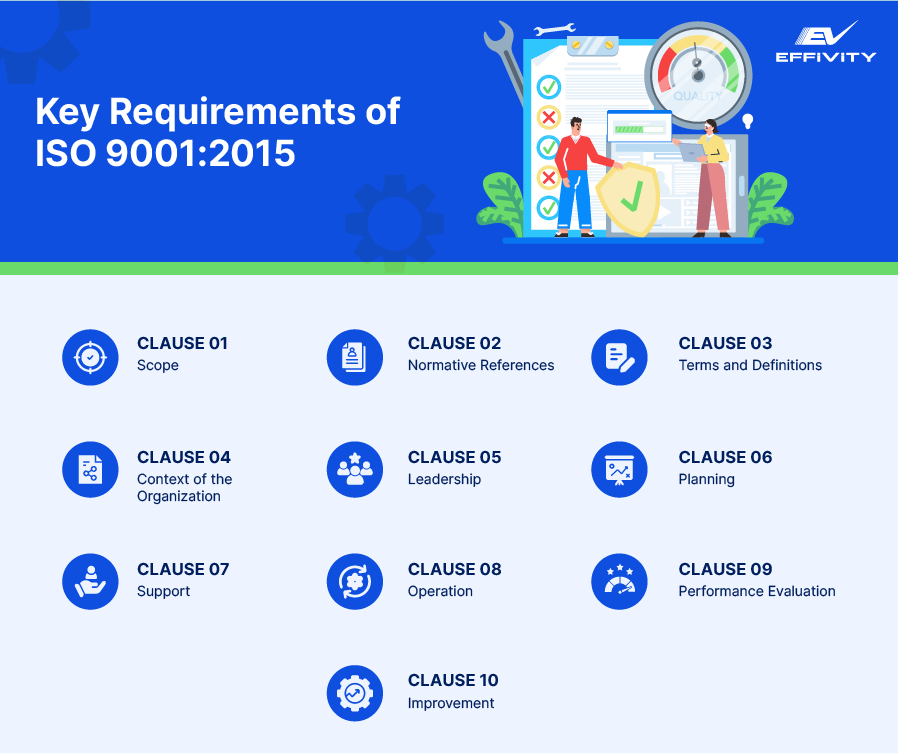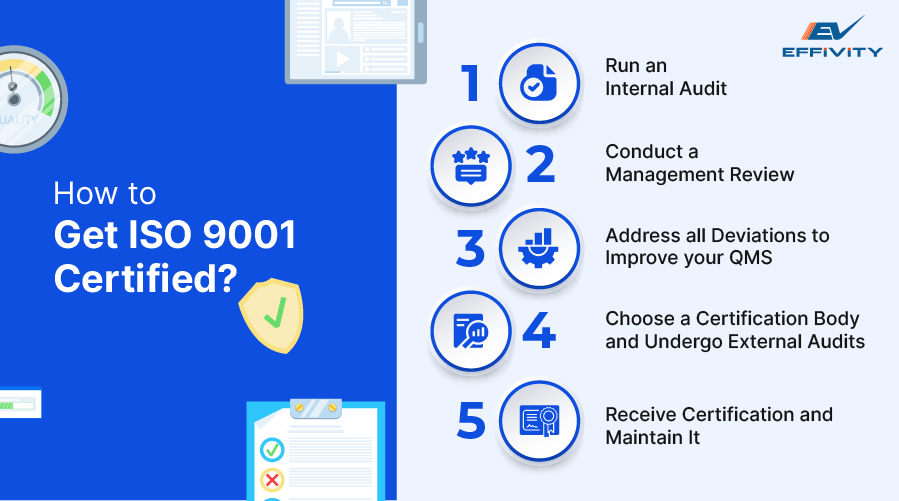Quality management system (QMS) can be a tough nut to crack. Especially with jargon like “ISO 9001” thrown around casually.
So, if you’re at your wit’s end, you’re not alone.
Fret not. This blog cuts through the confusion and breaks down ISO 9001 into bite-sized pieces for you. We’ve simplified everything—definitions, ISO 9001 full form, key requirements, importance, and steps to get certified.
Scroll down to get started!
What is ISO 9001 Standard?
Quality management is an essential aspect of running a successful business. But how to define the criteria for managing quality in products and services?
This is where international standards come in. These are regulations that govern the working of a quality management system.
ISO 9001 is one such standard developed by the International Organisation for Standardization or simply ISO. It falls under the ISO 9000 series, which is a broader collection of standards for quality management and quality assurance.
The primary goal of ISO 9001 is to define the requirements for the establishment, implementation, maintenance, and continual improvement of a QMS.
History of ISO 9001
Now that you’ve cleared the basics—the full form of ISO and what is 9001, let’s take a step back.
ISO 9001 was introduced in 1987 and has undergone 4 revisions since. These were in 1994, 2000, 2008, and 2015 (the current version).
That’s why it’s called ISO 9001:2015.
Key Requirements of ISO 9001:2015

The ISO 9001:2015 standard is laid out in the structure of 10 clauses. Let’s go over them and see how the Plan-Do-Check-Act (PDCA) cycle forms the backbone of the last 5 clauses:
| Sr.No | Clause | Area of Focus |
| 1 | Scope | Possibilities and applicability of the standard to different organizations |
| 2 | Normative References | Details regarding other standards and publications crucial to understanding ISO 9001:2015 |
| 3 | Terms and Definitions | Glossary to grasp the basics behind this particular standard like ISO, QMS full form, process approach, etc. |
| 4 | Context of the Organization | Requirements for defining the scope of your QMS by identifying the internal and external context of your business—stakeholders, vendors, processes, and so on. |
| 5 | Leadership | Focuses on the significance of securing top management commitment and proper leadership. |
| 6 | Planning | Reflects the “Plan” part of the PDCA cycle. This includes risk management (identification and assessment), setting quality objectives that align with the context of the organization, assigning responsibilities, and planning for implementation. |
| 7 | Support | Zeroes in on documentation requirements and all the resources related to the QMS. For example, human resources, infrastructure, quality instruments, etc. |
| 8 | Operation | This is the “Do” part of the PDCA cycle. It includes QMS processes like developing products and services, operational procedures, supplier quality management, etc. |
| 9 | Performance Evaluation | The “Check” part of the PDCA cycle emphasizes the need to monitor progress to boost business performance and ensure regulatory compliance. This includes running internal audits, management reviews, and customer satisfaction. |
| 10 | Improvement | This is the “Act” part of the PDCA cycle where organizations take corrective actions to eliminate non-conformities and deviations. |
Importance of ISO 9001 Certification
Given below are the benefits of ISO 9001 implementation:
1. Credibility
ISO 9001 is a globally recognized standard for quality management. Its implementation directly reflects an organization’s commitment to its customers and ethical practices.
2. Increased Organizational Efficiency
The PDCA cycle of the ISO 9001 certification focuses immensely on process improvement through rigorous evaluation of the QMS.
3. Compliance
The ISO 9001 certification demonstrates an organization’s ability to meet high-quality standards by keeping up with legal and industrial requirements.
4. Customer Satisfaction
By putting the customers at the core of the QMS, ISO 9001 shapes a customer-centric mindset within the organization which positively affects the production and delivery of its offerings.
5. Entry into New Markets
While ISO 9001 is not legally mandatory, it is a requirement for various industries and markets. Thus, getting ISO 9001 certified opens doors to new opportunities.
How to Get ISO 9001 Certified?

Let’s take a look at the ISO certification process for the 9001:2015 standard:
- Run an internal audit to monitor the effectiveness of your quality management system and find areas for improvement.
- Conduct a management review to assess all aspects related to the QMS, including resources, decision-making, roles and responsibilities, etc.
- Address all deviations and enhance the working of your QMS.
- Choose a certification body. They will review your documentation and then proceed with the final audit of the QMS.
- If successful, you’ll receive the certification. Continuously monitor and improve your QMS to maintain ISO 9001 compliance.
Skip the ISO 9001 Certification Hassle with Effivity!
No need to sweat blood and tears to get the ISO 9001 certification. Effivity’s QMS software is a ready-to-install solution that meets all the requirements of the ISO 9001 standard.
Choose a plan, set up the software, and you’ve landed a secure, compliant, and advanced quality management system.
Book a free demo to learn more.






























